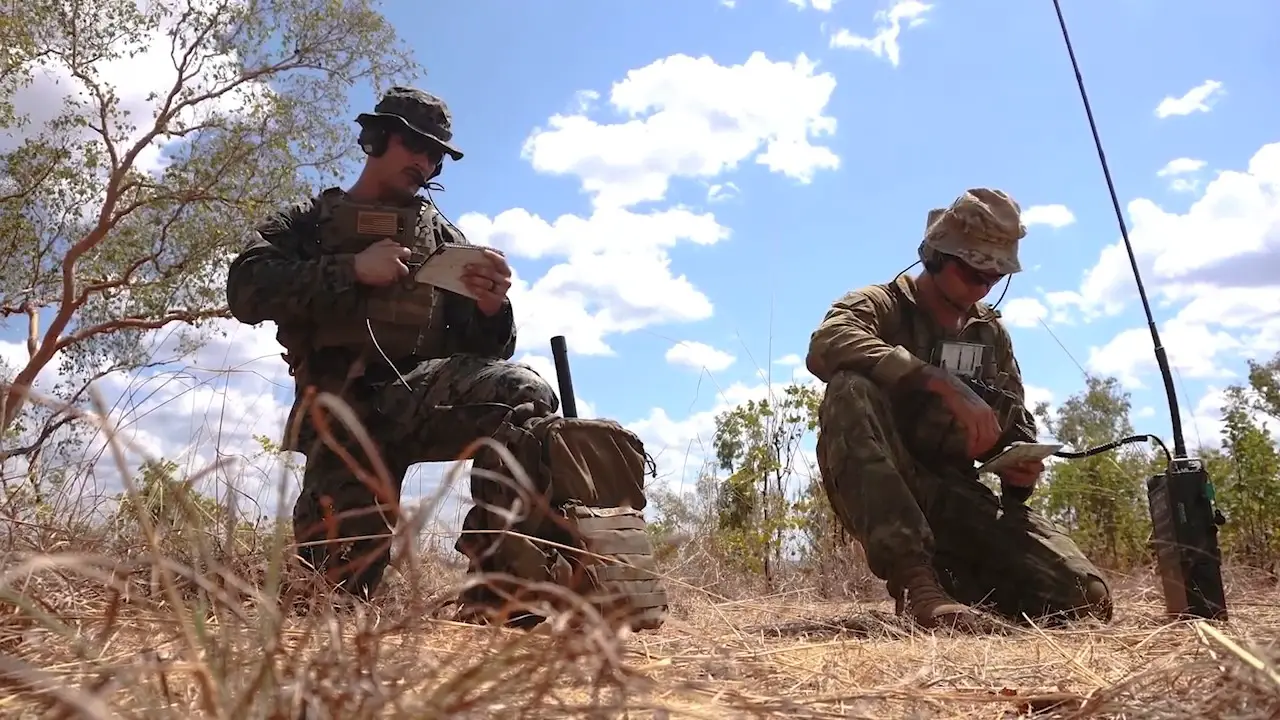The U.S. Marine Corps, Air Force and Australian Defence Force took a major step toward multinational interoperability as a combined task force during a major training scenario throughout August. The scenario focused on a small naval expeditionary force’s ability to rapidly deploy, integrate with foreign partners, coordinate airstrikes and call for close air support on targets within contested environments. Marine Rotational Force – Darwin and Australian Army joint terminal attack controllers (JTACs) worked alongside Australian Army Tiger armed reconnaissance helicopters and Marine Corps RQ-21A Blackjacks to identify and surveil notional targets.
The staffs coordinated airstrikes from U.S. Air Force B-1B Lancers with the 37th Expeditionary Bomb Squadron and B-2 Spirit stealth bombers with the 393rd Bomb Squadron, before passing those same aircraft to tactical units to conduct close air support. The aircraft, deployed to the Indo-Pacific region as part of Pacific Air Force’s Bomber Task Force, flew from locations as far as 3991 miles away to conduct the missions in the Australian Northern Territory. The success of multinational coordination of this scale is a testament to the U.S.-Australian alliance and defense ties as well as MRF-D’s capability as a forward-positioned force, able to quickly respond to a variety of security challenges. MRF-D’s ability to integrate with our sister services located across the Indo-Pacific region and Australian Defence Force partners.

The exercise design was driven by the U.S. Marine Corps’ modernization plan, which seeks to make Marines “first on the scene, first to help, first to contain a brewing crisis, and first to fight if required to do so. The plan calls for Marines to operate from forward expeditionary bases as a fast and mobile force in order to conduct a variety of missions that help set conditions for larger naval forces. Marines employed both traditional and modern forms of target location, confirmation and damage assessment. Marine Unmanned Aerial Vehicle Squadron 3, MRF-D’s Air Combat Element, utilized the RQ-21A to conduct surveillance and reconnaissance of one target, while a simultaneous strike was conducted with Australian Army forward air controllers airborne in Tiger armed reconnaissance helicopters.
U.S. Air Force strikes were also conducted with U.S. Marine and Australian Army JTACs. The exercise did not just demonstrate the execution of long-range strike, but also the targeting and tasking function of MRF-D, the III Marine Expeditionary Force Fires and Effects Coordination Cell, and III MEF Information Group’s Space Operations Cell with joint and combined forces. The training comes on the heels of a major strategic meeting between U.S. Secretary of State Mike Pompeo and Secretary of Defense Mark Esper with Australian Minister for Foreign Affairs Marise Payne and Minister for Defence Linda Reynolds in Washington D.C. on July 28, 2020.
While significant for the Marines, the incorporation of U.S. bombers was also a major step for the U.S. Air Force’s transition, which seeks to pre-position bombers forward in the Indo-Pacific from a broad array of overseas locations with greater operational resiliency. The bombers participating in the exercise also conducted missions with U.S. Air Force F-15C Eagles from Kadena Air Base, Okinawa, Japan, USS Ronald Reagan Carrier Strike Group, F-35B Lightning IIs assigned to Marine Corps Air Station Iwakuni, Japan, and F-15J aircraft from the Japan Air Self Defense Force. In an era where defense ties between the U.S. and allies are critical to regional security and cooperation, the rotational deployment of the Marine force to Darwin builds U.S.-Australian capacity to quickly respond to a variety of security challenges and maintain a postured and ready force in the region.
















